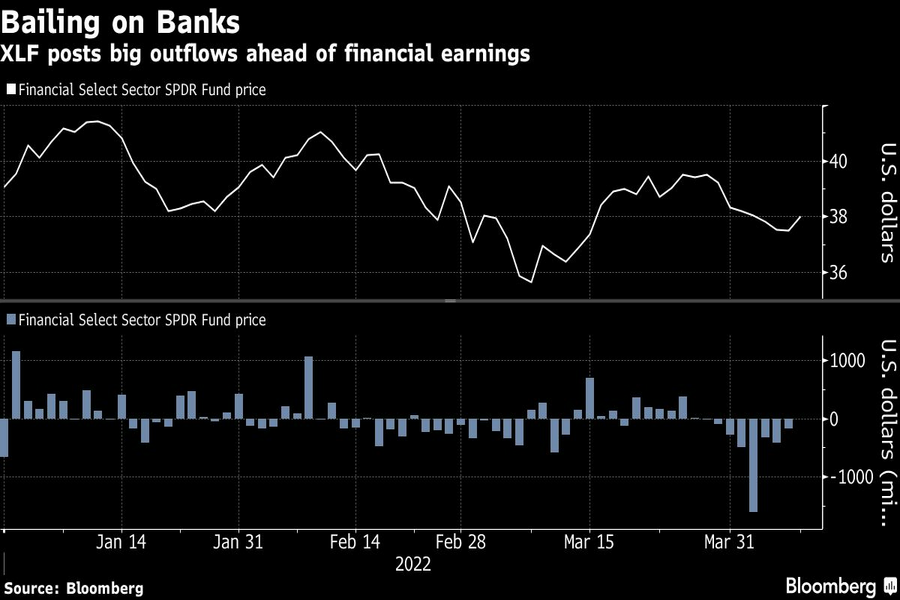

Exchange-traded fund investors are bailing on bank stocks in a big way just before the earnings season kicks off.
More than $2.5 billion has exited the $42 billion Financial Select Sector SPDR Fund (XLF) last week, putting the ETF on track for the largest one-week outflow since June 2020, according to data compiled by Bloomberg. Prior to last Friday’s 1.2% gain, XLF had dropped for seven straight days.
While growing anxiety about a potential recession — amplified by the Treasury yield curve’s recent brief inversion — explains the distaste for financial stocks, that underperformance sets the sector up for a rebound as the biggest banks take the stage, according to Wells Fargo. JPMorgan Chase & Co., Citigroup Inc. and Goldman Sachs Group Inc. are among the firms reporting results next week.

“If we’re talking about recession, we’re talking about credit. If credit goes bad, that’s a problem,” Chris Harvey, head of equity strategy at Wells Fargo, said in a Bloomberg Television interview. “At the end of the day, we don’t think the underlying fundamentals are going to be as bad as feared, we don’t think guidance will be as bad as feared, and what we’re going to see is a relief rally for the banks.”
While XLF initially rode the rise Treasury yields higher, performance has recently sputtered. XLF has declined nearly 3% so far this year, compared with a 5.5% drop for the S&P 500.

Summit Financial unveiled a suite of eight new tools, including AI lead gen and digital marketing software, while MassMutual forges a new partnership with Orion.

A new analysis shows the number of actions plummeting over a six-month period, potentially due to changing priorities and staffing reductions at the agency.

The strategic merger of equals with the $27 billion RIA firm in Los Angeles marks what could be the largest unification of the summer 2025 M&A season.

Report highlights lack of options for those faced with emergency expenses.

However, Raymond James has had success recruiting Commonwealth advisors.
Orion's Tom Wilson on delivering coordinated, high-touch service in a world where returns alone no longer set you apart.
Barely a decade old, registered index-linked annuities have quickly surged in popularity, thanks to their unique blend of protection and growth potential—an appealing option for investors looking to chart a steadier course through today's choppy market waters, says Myles Lambert, Brighthouse Financial.
